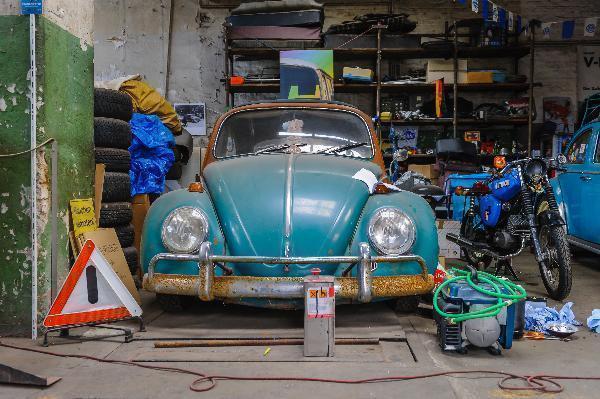The Lifecycle of a Scrap Car: From Junkyard to Rebirth

Cars, like all machines, have a limited lifespan. When a car reaches the end of its usable life, it often ends up as scrap. But what happens to a car once it becomes scrap? Let us explore the lifecycle of a scrap car removal in Sydney, from its arrival at the junkyard to its transformation into something new.
1. Arrival at the Junkyard
When a car is no longer roadworthy or economically viable to repair, it is typically sold to a junkyard. Junkyards, also known as salvage yards, specialize in processing old and damaged vehicles. Upon arrival, the car undergoes an initial inspection to assess its condition and potential for parts recovery.
Facts:
Approximately 12-15 million vehicles reach the end of their life each year in the United States.
Junkyards are regulated to ensure environmentally safe handling of hazardous materials.
2. Dismantling and Parts Recovery
Once the car is in the junkyard, the dismantling process begins. This involves carefully removing usable parts that can be resold. Components such as engines, transmissions, alternators, and body panels are often in demand and can be refurbished for reuse.
Facts:
About 80% of a vehicle’s parts are recyclable.
The used auto parts industry helps reduce the need for manufacturing new parts, saving energy and resources.
3. Fluid and Hazardous Material Drainage
Before further processing, the car must be drained of all fluids and hazardous materials. This includes oil, coolant, brake fluid, and refrigerants. Proper disposal of these substances is crucial to prevent environmental contamination.
Facts:
A single quart of motor oil can contaminate up to a million gallons of water.
Junkyards follow strict guidelines for the disposal of hazardous materials to minimize environmental impact.
4. Crushing and Shredding
After valuable parts and fluids are removed, the remaining car body is prepared for crushing. The car is flattened in a crusher, making it easier to handle and transport. These flattened vehicles are then fed into a shredder, which breaks them down into small pieces.
Facts:
Car crushers can apply up to 2,000 psi to flatten a vehicle.
Shredders can process up to 5,000 vehicles a day.
5. Separation of Materials
The shredded material is a mixture of metals, plastics, and other materials. Using a series of magnets, air classifiers, and other sorting technologies, the shredded material is separated into its constituent parts. Metals like steel and aluminum are extracted and sent to recycling facilities.
Facts:
Steel is the most recycled material in the world, with about 86% of all steel being recycled.
Modern separation techniques can recover up to 99% of ferrous metals from shredded vehicles.
6. Recycling and Reprocessing
The separated metals are melted down and reprocessed to create new materials. Steel from scrap cars is often used to manufacture new cars, appliances, and construction materials. Other materials, like plastics and rubber, can also be recycled and repurposed in various industries.
Facts:
Recycling one ton of steel saves 2,500 pounds of iron ore, 1,400 pounds of coal, and 120 pounds of limestone.
The automotive recycling industry in the United States provides enough steel to produce nearly 13 million new vehicles each year.
7. The Environmental Impact
Recycling scrap cars significantly reduces the need for raw materials and the energy required to produce new products. This process helps conserve natural resources and reduces greenhouse gas emissions. Additionally, it minimizes the amount of waste that ends up in landfills.
Facts:
Recycling steel saves 74% of the energy used to produce it from raw materials.
The recycling process reduces air pollution by 86% and water pollution by 76% compared to traditional steel production.
8. The Future of Automotive Recycling
As technology advances, the efficiency of automotive recycling continues to improve. Innovations in material recovery and recycling processes are making it possible to reclaim even more from end-of-life vehicles. Electric vehicles (EVs) pose new challenges and opportunities for the industry, with their unique components and batteries requiring specialized recycling methods.
Facts:
The global automotive recycling market is expected to reach $119.9 billion by 2027.
Advances in battery recycling are crucial as the number of EVs on the road increases.
Conclusion
The lifecycle of a scrap car is a complex journey that highlights the importance of recycling and sustainability. From the junkyard to its rebirth as new materials, the process ensures that cash for scrap cars in Bondi continue to provide value even after their driving days are over. By understanding this lifecycle, we can better appreciate the efforts made to reduce waste and protect our environment.
This transformation not only benefits industries but also contributes significantly to environmental conservation. As technology continues to evolve, the future of automotive recycling looks promising, ensuring that the end of a car's life is just the beginning of something new.
Note: IndiBlogHub features both user-submitted and editorial content. We do not verify third-party contributions. Read our Disclaimer and Privacy Policyfor details.







